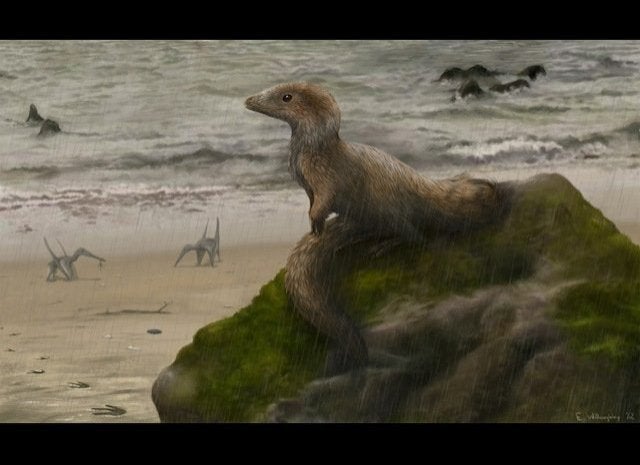A Field Museum scientist in Chicago has unearthed the fossil of a monster-like sea predator that was at the top of the maritime food chain roughly 244 million years ago.
The museum put the full fossil form on display Monday, some 14 years after a Field Museum scientist first spotted it in the Nevada desert. A paper describing the finding will appear in an issue of Proceedings of the National Academy of Sciences later this week.
Field Museum scientist Jim Holstein made the amazing find, saying in a WBEZ video (embedded above) that the 28-foot-long creature, now known as Thalattoarchon saurophagis, or "lizard-eating ruler of the seas" likely resembled a "modern-day dolphin." The ichthyosaur is only the second on record to be discovered.
Science news website LiveScience said the "prehistoric sea monster" was an early member of the ichthyosaurs, or marine reptiles that evolved from land reptiles.
In a release, the museum describes the creature as having "a massive skull and jaws armed with large teeth with cutting edges used to seize and slice through other marine reptiles in the Triassic seas."
The Tribune reports the trio of scientists "didn't fully understand the potential significance of what they had found" and essentially forgot about the discovery for seven years. It was when a student of one of the scientists looked over Holstein's field notes and spotted the entry.
Nadia Frobisch, who authored the paper describing the animal in the Proceedings of the National Academy of Sciences told the Tribune, "There is only one very poorly preserved ichthyosaur known from the Himalaya region to have cutting edges on the teeth."
The teeth are what make the find so unique. WBEZ reports most sea predators during the period had cone-shaped teeth for biting and swallowing prey whole; with arrowhead-shaped teeth, the newly discovered creature could actually chomp on animals its same size.
Since the Greek names are a mouthful, the Field Museum is calling the find "Jim" in honor of the scientist who discovered it.
"Our 'Jim' was the first in a long row of 'T. rexes' of the sea," said Holstein's expedition colleague, Martin Sander.
The Field Museum has been chipping the fossil out of the rock from which it was excavated since 2008. The National Geographic Society's Committee for Research and Exploration gave the museum a $20,000 grant to excavate the fossil.
CORRECTION: The creature's name -- Thalattoarchon saurophagis -- is Greek, not Latin, as a previous version of this story incorrectly stated.
